Submitted by WA Contents
Lesley Lokko announces theme for Venice Architecture Biennale 2023 as "The Laboratory of the Future"
Italy Architecture News - May 31, 2022 - 14:25 7881 views

Roberto Cicutto, the President of Venice Architecture Biennale, and Lesley Lokko, the curator of the 18th International Architecture Exhibition, have announced the theme as "The Laboratory of the Future" for the Venice Architecture Biennale 2023 at a press conference today.
The Venice Architecture Biennale 2023 will be held from Saturday 20 May to Sunday 26 November, 2023 at the Arsenale and Giardini venues.
Themed as The Laboratory of the Future, Lokko will curate the 18th exhibition where the African continent is examined as the Laboratory of the Future, and diversity and cultural identity are acknowledged with all its own layers - from organizational structures to individual skills and habits.
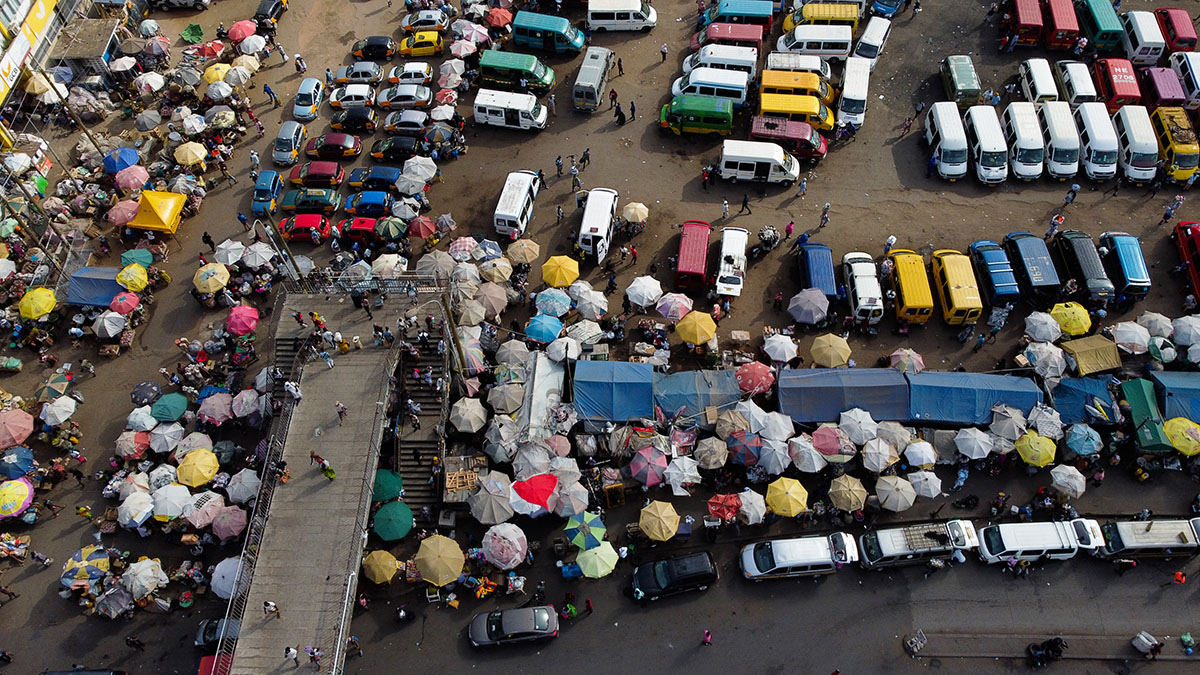
Accra, Festus Jackson-Davis. Image courtesy of La Biennale di Venezia.
"There is one place in which all these questions of equity, resources, race, hope and fear converge and coalesce. Africa"
As an Ghanaian-Scottish architect, academic, and novelist Professor Lesley Lokko takes over an important role in the 2023 Venice Architecture Biennale. She is the first black architect to curate the biannual Venice Architecture Biennale, and is the third woman to lead the exhibition, following Kazuyo Sejima's appointment in 2010 and Yvonne Farrell and Shelley McNamara in 2018.
"There is one place in which all these questions of equity, resources, race, hope and fear converge and coalesce. Africa," said Lesley Lokko at the press conference.
"At an anthropological level, we are all African. And what happens in Africa happens to us all," Lokko continued.
"The title of the 18th International Architecture Exhibition is The Laboratory of the Future. It operates on several levels."
At the conference, Lokko underlined that due to Africa represents the world’s youngest continent than the USA and Europe, the continent has more potential and open to more individual and organizational skills that can be revealed.
"Firstly, Africa is the laboratory of the future. We are the world’s youngest continent, with an average age half that of Europe and the United States, and a decade younger than Asia," Lokko continued.
"We are the world’s fastest urbanising continent, growing at a rate of almost 4% per year. This rapid and largely unplanned growth is generally at the expense of local environment and ecosystems, which put us at the coal face of climate change at both a regional and planetary level," Lokko added.
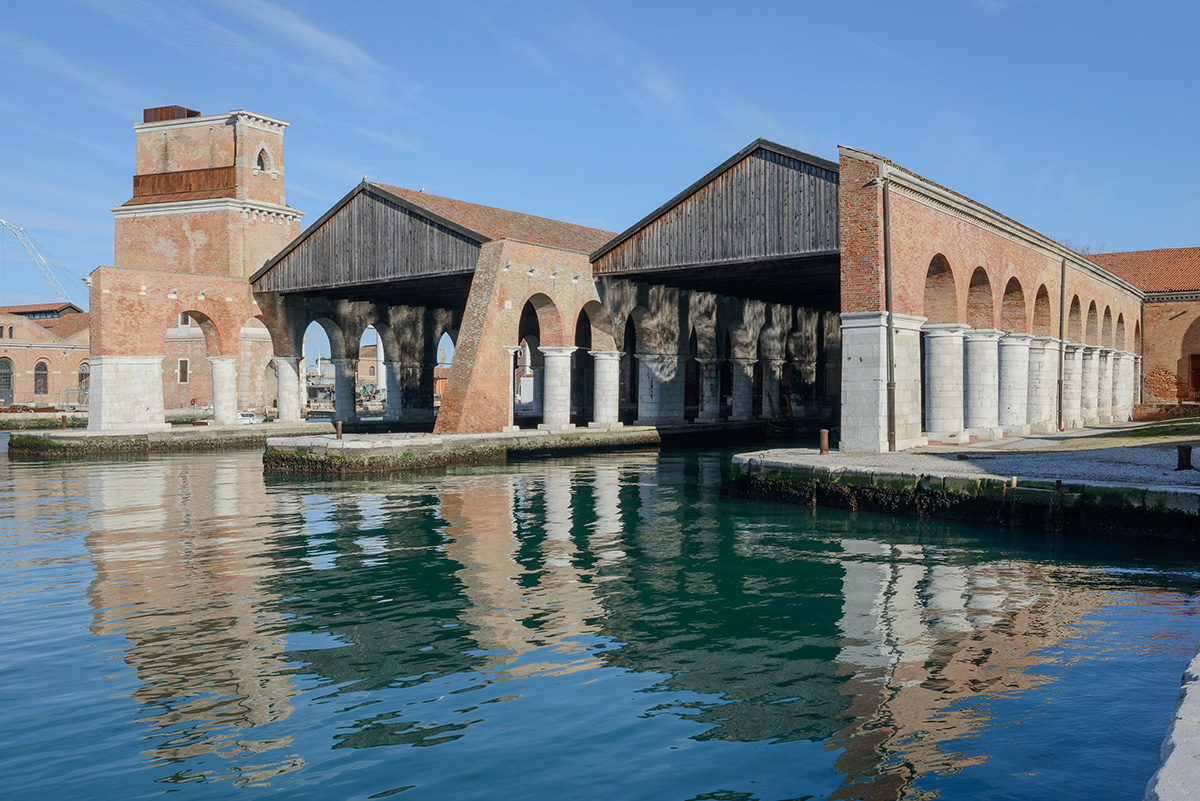
Arsenale. Image © Andrea Avezzù, courtesy of Venice Biennale
"In all the talk of decarbonisation, it is easy to forget that black bodies were the first units of labour to fuel European imperial expansion that shaped the modern world. Racial equity and climate justice are two sides of the same coin," Lokko continued.
"But hope is a powerful currency. To be hopeful is to be human. At a deeply personal level, I owe my presence at this table today to the tireless demands for a more just, more inclusive and more equitable fought for by generations before me."
"The vision of a modern, diverse, and inclusive society is seductive and persuasive, but as long as it remains an image, it is a mirage. Something more than representation is needed, and architects historically are key players in translating images into reality," Lokko added.
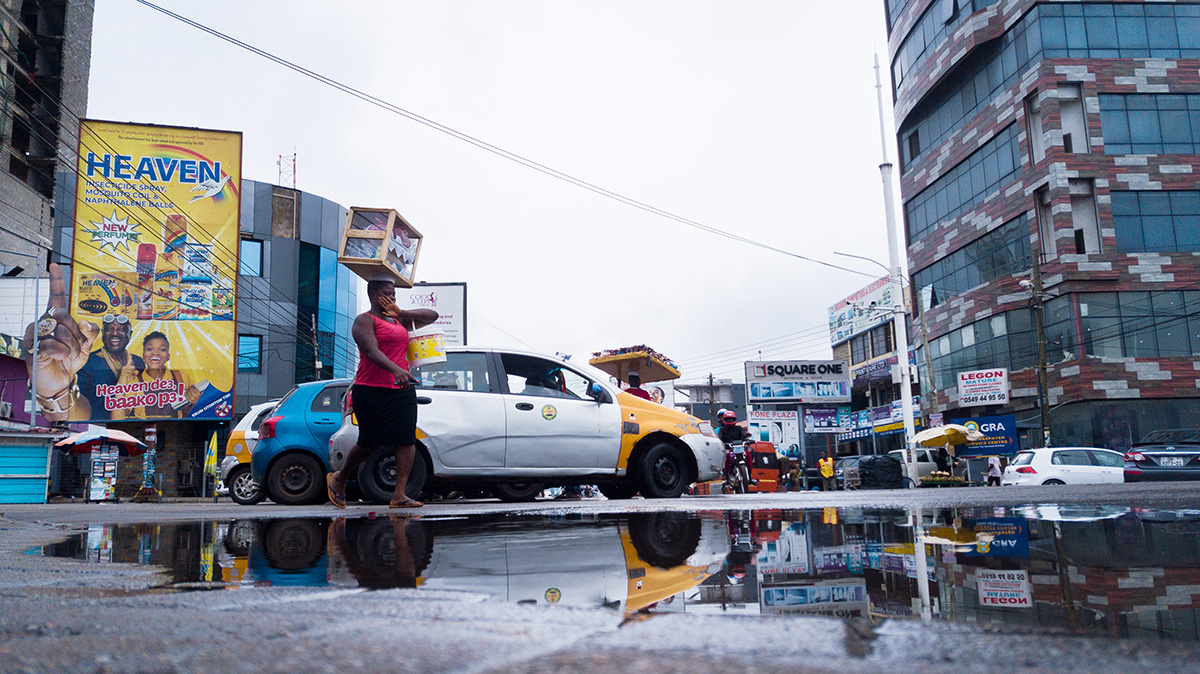
Accra, Festus Jackson-Davis. Image courtesy of La Biennale di Venezia.
"Venice Architecture Biennale itself is also a kind of laboratory of the future"
Lokko also emphasized that the Venice Architecture Biennale itself is a kind of laboratory of the future and according to the curator, the exhibition creates a cross-section of a specific space in which speculations take place about the relevance of the architectural discipline to this world.
"Today, the word ‘laboratory’ is more generally associated with scientific experimentation and conjures up images of a specific kind of room or building," Lokko added.
"But Richard Sennett’s examination of the word ‘workshop’, from which the word ‘laboratory’ stems, deepens the concept of collaborative endeavours in a different way."
"Importantly, during this temporary relocation, cooperation would be forged by direct experience and daily contact with one another as equals."
"We envisage our exhibition as a kind of workshop, a laboratory where architects and practitioners across an expanded field of creative disciplines draw out examples from their contemporary practices that chart a path for the audience — participants and visitors alike — to weave through, imagining for themselves what the future can hold."
"The Laboratory of the Future’s story begins here, today, but this is only the beginning," Lokko added.
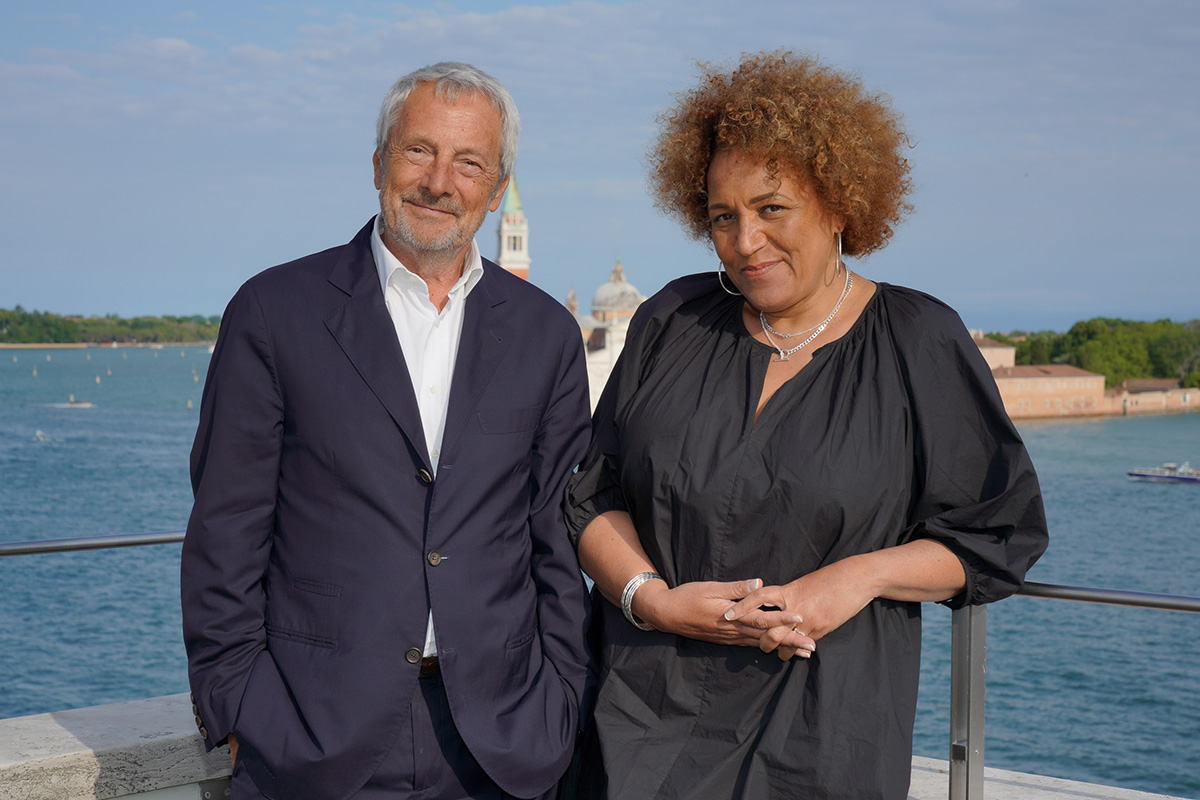
Roberto Cicutto, the President of Venice Architecture Biennale, and Lesley Lokko, the curator of the 18th International Architecture Exhibition. Image © Andrea Avezzu, courtesy La Biennale di Venezia
"This is an Exhibition that, based on very practical premises and very specific points of view"
At the press conference, Roberto Cicutto, the President of Venice Architecture Biennale, said that the exhibition will reveal "very practical premises and very specific points of view" and will highlight the two irreplaceable words: "laboratory and future".
"The world has always been rife with cultural misunderstandings: up until the beginning of the twentieth century, Europe viewed African art as barbaric and incomprehensible, and it took the provocations of the artistic avantgardes to force Europeans to look at a Bantù mask through a different lens; only cultured elites knew what the statues of Easter Island were: common people in Europe, and perhaps in China, judged the erotic sculptures on Indian temples, when they happened to see photographs of them, to be lewd and frenzied: Christians were scandalised when the followers of other religions represented their divinities in animal form, forgetting that western Christianity for centuries represented the third person of the Holy Trinity in the form of a dove.” (Excerpt from Lectio Magistralis by Umberto Eco to the Ministers of Culture at the inauguration of the Expo di Milano in 2015), said Roberto Cicutto at the press conference.
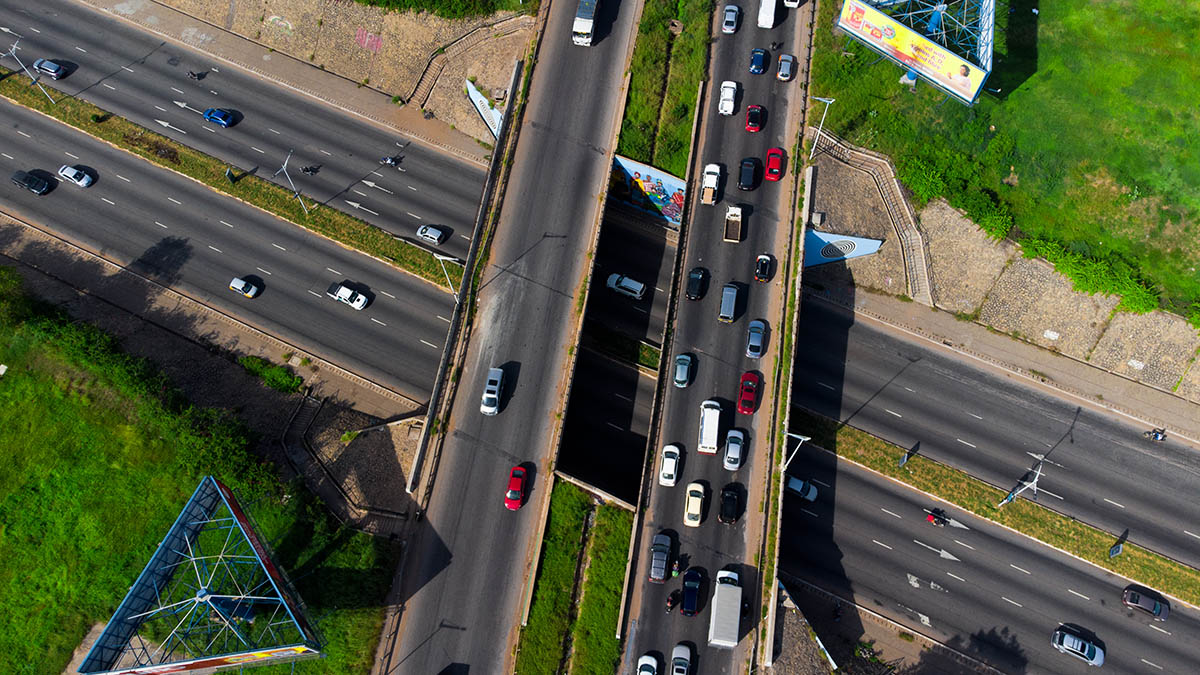
Accra, Festus Jackson-Davis. Image courtesy of La Biennale di Venezia.
"I quote these words today because I believe that the 18th International Architecture Exhibition curated by Lesley Lokko will have much to say about these themes as well."
"A sort of update seven years after that event. Lesley shows determination and courage in using two words in her title that are time-worn but irreplaceable – “laboratory and future” – to restore the full importance of their meaning."
"You will understand how her approach looks very much like the proposal for a pact between the visitors of La Biennale, the world of architecture and of culture in general."
"This is an Exhibition that, based on very practical premises and very specific points of view, will look straight into the eyes of the representatives of participating Countries, and all those who will crowd the Giardini, the Arsenale and the City of Venice. All in order to speak to the world, which is the real reason why a Curator takes on the responsibility of organizing an International Exhibition of La Biennale," Cicutto concluded.
Read the full statement of the curator Lesley Lokko for the 18th International Architecture Exhibition below:
The Laboratory of the Future
Every exhibition tries to tell a story, distilling ideas into a narrative that holds both complexity and clarity, and we are indeed living in complex times. There is no question that the world today feels less stable than it was three years ago, or even three months ago. New tensions surface daily between nations, neighbours, natives and newcomers; between us and our ‘Others’, between ourselves and our environments. Despite the speed of advances in medical science over the past two years, within the same time frame, global protests have revealed the depth and scale of social inequities in ways that those who have been too comfortable and distanced to see it, now see otherwise. Europe, lulled into a false sense of security over the past sixty years is suddenly forced to confront the same questions of land, language and identity that parts of Africa, Asia and the Middle East never saw disappear. The last thirty-six months have often felt like a long-overdue reckoning, as if a bill has been presented that all of us — in multiple, myriad ways — do not have the means to pay. Having emerged blinking into the sunlight after the experience of lockdown, we now look at our screens and each other, a little unsure, perhaps, but importantly, full of hope and longing too.
Two powerful terms have emerged over the last two decades, which are simultaneously global and local: decolonisation and decarbonisation. Both are experienced at the macro scales of social, political and economic forces far beyond both our understanding or control, yet are also experienced viscerally in the microscopic and intimate details of everyday life. This contemporary quality of being both general and specific, influenced by vast forces and yet shaped by the specifics of place is oxymoronic; it asks us to explain and explore our own lives and environments in the same breath; to be aware of ourselves and others in ever expanding, overlapping networks of power and the often hidden price of privilege and control. At a material level, our built environments accurately reflect the conundrum: we speak of democratic spaces, public spaces, green energy and the human spirit as though the conditions that make this possible and attainable are universal, and do not come at an often terrible cost to our fellow humans and the non-human and natural worlds. At times it seems too complex to properly grasp, let alone control or change. But it is not. Historically poised at the intersection of art and science, architecture’s ability to negotiate between and across boundaries is well understood, at least by architects. Now, however, the ground beneath our feet is moving, often unpredictably. For a profession that relies on grounding, both conceptually and physically, more fluid forms of territory, identity and epistemology can seem threatening. But they can also excite. Rethinking the terms and tools, as well as the edges of our discipline is a powerful way to rediscover not only what makes architecture distinct, but also where it meets and merges with other disciplines in ways that enrich us all.
More than buildings, forms, materials or structures, it is architecture’s ability to alter how we see the world that is its most precious and powerful gift. The slow, careful translation of ideas into material and, increasingly, digital form requires an almost constant shift of vision, simultaneously narrowing and expanding one’s gaze in order to accommodate differences in scale, context, culture and aspiration, as well as the myriad other demands that must be met in order to bring both buildings and knowledge into the world. We can now ‘see’ more of the world than ever before. New technologies continuously appear and disappear, giving us unfiltered glimpses of life in parts of the globe we will likely never visit, much less understand. But to see both near and far simultaneously is also, as Du Bois and Fanon famously put it, a form of ‘double consciousness’, the internal conflict of all subordinated or colonised groups, which describes the majority of the world, not only ‘there’, in the so-called Developing-, Third-, and Arab Worlds, but ‘here’ too, in the metropoles and landscapes of the global North. Here in Europe we speak of minorities and diversity but the truth is that the West’s minorities are the global majority; diversity is our norm.
There is one place in which all these questions of equity, resources, race, hope and fear converge and coalesce. Africa. At an anthropological level, we are all African. And what happens in Africa happens to us all.
The title of the 18th International Architecture Exhibition is The Laboratory of the Future. It operates on several levels.
Firstly, Africa is the laboratory of the future. We are the world’s youngest continent, with an average age half that of Europe and the United States, and a decade younger than Asia. We are the world’s fastest urbanising continent, growing at a rate of almost 4% per year. This rapid and largely unplanned growth is generally at the expense of local environment and ecosystems, which put us at the coal face of climate change at both a regional and planetary level. We remain the most under-vaccinated continent at just 15%, yet recorded the fewest deaths and infections by a significant margin that the scientific community still can’t quite explain. So often on the wrong side of history and hope, the resilience, self-reliance and long, long history of grass-roots community health care suddenly tipped the balance in our favour. The history of forced migration through the trans-Atlantic slave trade is the ground on which successive struggles for civil rights and a more civil society are being fought all over the world today. In all the talk of decarbonisation, it is easy to forget that black bodies were the first units of energy to fuel the European imperial expansion that has shaped the modern world. Racial equity and climate justice are two sides of the same coin.
But hope is a powerful currency. To be hopeful is to be human. At a deeply personal level, I owe my presence at this table today to the tireless demands for a more just, more inclusive and more equitable fought for by generations before me. The vision of a modern, diverse, and inclusive society is seductive and persuasive, but as long as it remains an image, it is a mirage. Something more than representation is needed, and architects historically are key players in translating images into reality.
Secondly, La Biennale di Venezia itself is also a kind of laboratory of the future, a time and space in which speculations about the discipline’s relevance to this world — and the world to come — take place. Today, the word ‘laboratory’ is more generally associated with scientific experimentation and conjures up images of a specific kind of room or building. But Richard Sennett’s examination of the word ‘workshop’, from which the word ‘laboratory’ stems, deepens the concept of collaborative endeavours in a different way. In the ancient world, in both China and Greece, the workshop was the most important institution anchoring civic life. In the aftermath of the American civil war, Booker T Washington, an ex-slave, conceived a project in which freed slaves recovering from slavery would leave home, train at two model institutions, the Hampton and Tuskegee Institutes, and return to their home communities. Importantly, during this temporary relocation, cooperation would be forged by direct experience and daily contact with one another as equals. We envisage our exhibition as a kind of workshop, a laboratory where architects and practitioners across an expanded field of creative disciplines draw out examples from their contemporary practices that chart a path for the audience — participants and visitors alike — to weave through, imagining for themselves what the future can hold.
The Laboratory of the Future’s story begins here, today, but this is only the beginning. We will get back to this soon to offer further glimpses into the curatorial vision and direction as it unfolds in conversation with all the participants, including the National Pavilions.
Lesley Lokko
Artistic Director Architecture Department
Curator of the 18th International Architecture Exhibition
Top image: Lesley Lokko. Image © Jacopo Salvi, courtesy La Biennale di Venezia.
